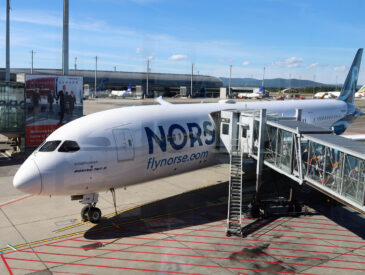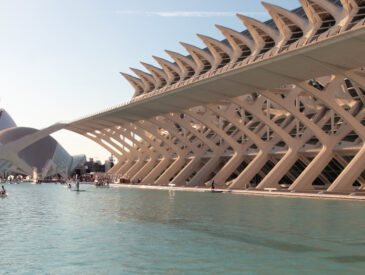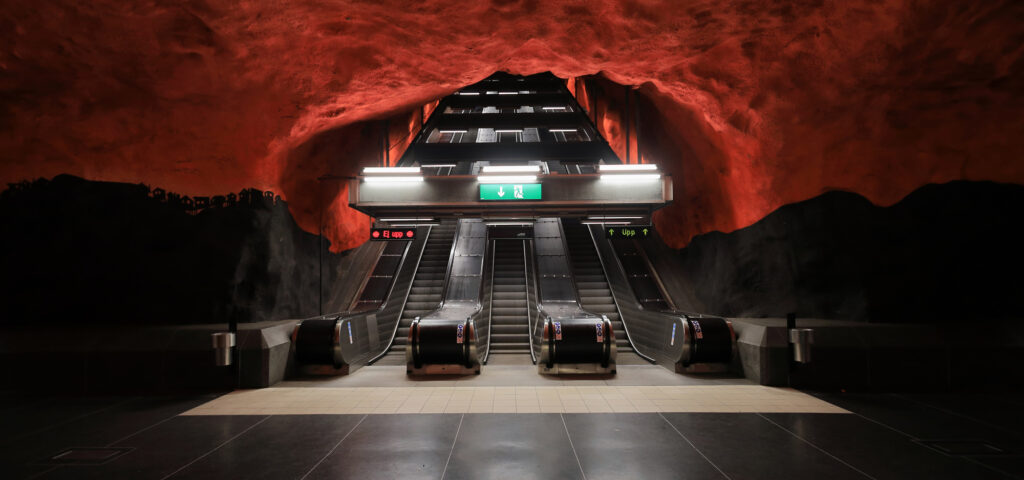
Train stations can make for interesting architectural spaces, their functional needs married with everything from classical styling through to hyper-modernism. Building underground adds further challenges – every extra piece of rock removed comes at a cost, and there is no natural light to work with. Plenty of metros are celebrated for their style, but often this is at a system-wide level. Whilst the London Underground offers many lessons in design, stripped of the signage it would take a serious fan to distinguish the platforms of one stop from another.
Not so with Stockholm’s tunnelbana, where most of the hundred stations have their own unique visual identity. It is often described as the world’s longest art gallery, but for the most part the stations themselves are the exhibits.
Travel and architecture geek that I am, on this trip I deliberately set aside some time to roam the network, armed with a 72 hour travel card (SEK 330, also allows for cheap-but-slow journeys between Arlanda airport and the city using local buses and commuter trains). In theory, you could explore as long as you wanted on just a 39SEK single fare, so long as you stayed underground – only once you exit a station after the 75 minute transfer validity ends would you need another ticket.
Pleasingly, I was far from the only person treating the metro as an attraction in its own right rather than transport to other sights. It’s a good choice for winter visitors, the comfortable subterranean climate a pleasant alternative to January’s freezing above-ground temperatures and at best six hours of daylight. It was fun to compare maps and trade suggestions with others I met along the way – I even ran into the same photographer twice on two different days! So, what did we find?
T-Centralen
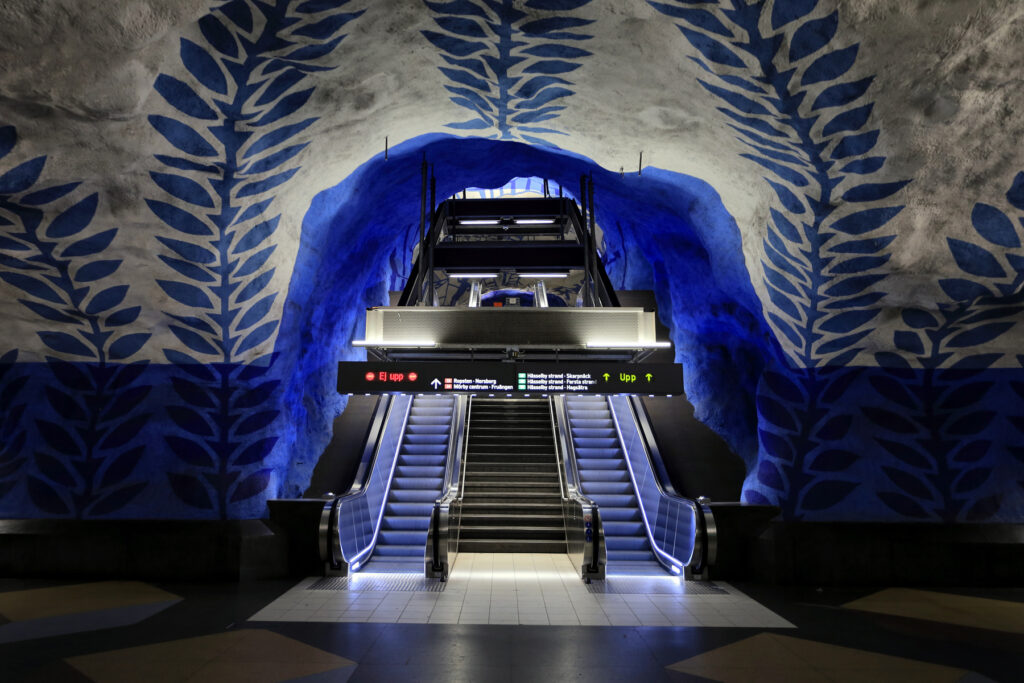
The only meeting point of the metro’s three lines, T-centralen is also connected to the deeper platforms of Stockholm City – used by commuter trains – and the surface-level Stockholm Central, for other rail services including the Arlanda Express. This makes the whole complex a bit of a maze, so you could miss the best of its underground architecture – the blue line – even if a journey takes you through.
From Central Station, you’ll first pass the red / green line platforms, modestly decorated with ceramic tiles. You’ll certainly know when you’ve found the blue line, as the colour dominates the decorative scheme: first with silhouettes of construction workers, and then more abstract floral patterns. You also can’t miss that you now appear to be in a cave! This striking style is a common element to many of the stations: spray concrete following the contours of the natural rock serves as a canvas for each artist.
Kungsträdgården
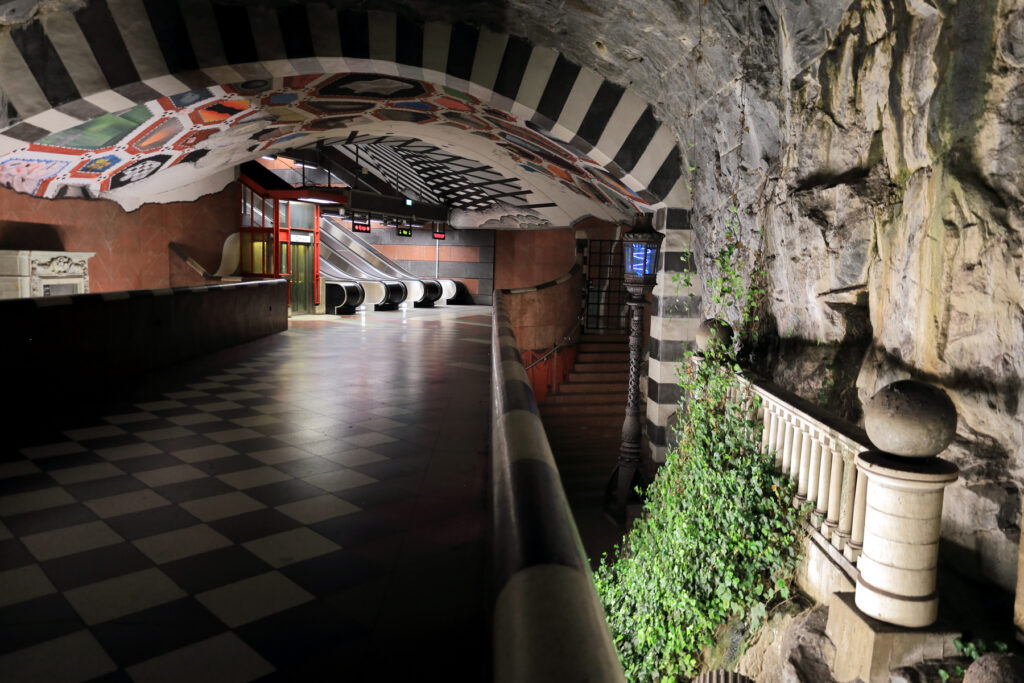
The blue line’s eastern terminus goes beyond cave to archaeological dig site, evoking ruins through fragments of statues and columns. Many of these are replicas of features that decorated a palace that used to stand here; the red, white and green colour scheme evokes its formal gardens. There’s also water features, various sculptures, and even a petrified tree! As the end of the line, this is also an easier place to get photos with trains in.
Rådhuset
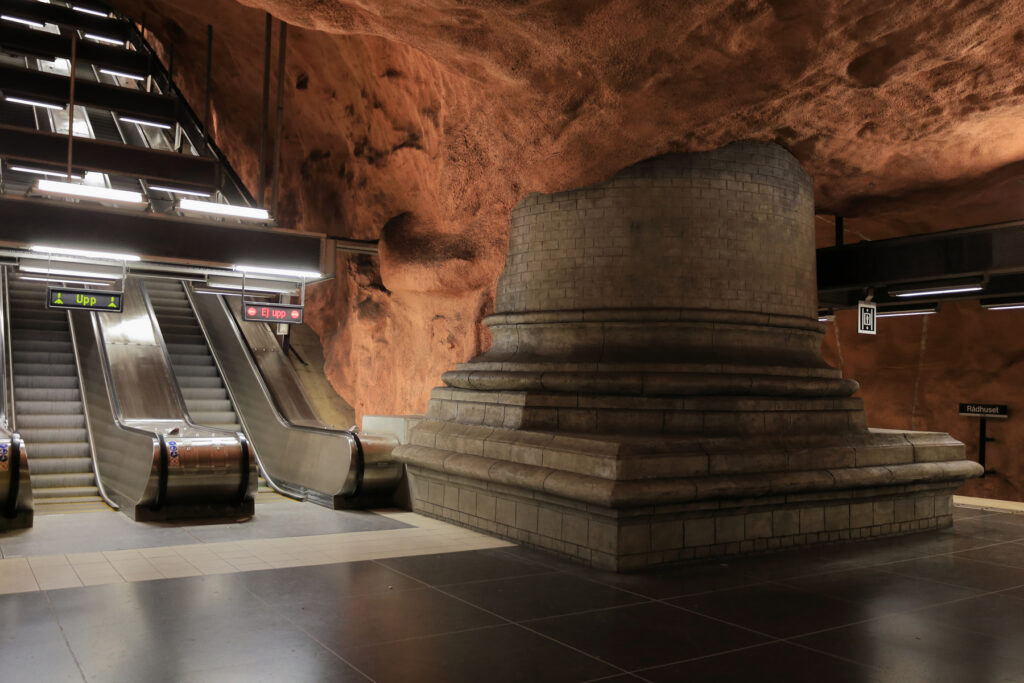
This was the only metro stop I remember from my first visit to Stockholm; a particularly naturalistic interpretation of the cave station concept, with earthy tones selected for the rock face. There’s also some classical architecture embedded within the walls – most notably the base of a massive column by the escalators (often a focal point for these stations).
Fridhemsplan
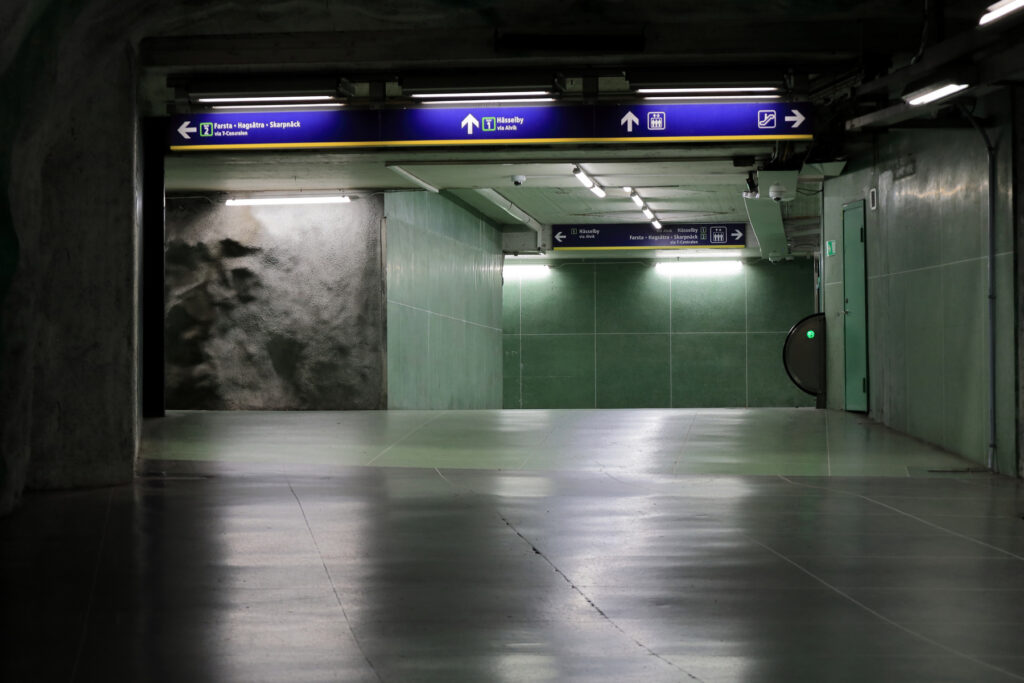
This station wasn’t on my shopping list, but as the only other place to switch from the blue to green lines, I took a look anyway. The theming here is nautical, with a variety of dioramas behind glass. However, what I found more interesting were the interchange tunnels – initially lost, it was soon clear that I was heading the right way for the green platforms from the colour of the walls!
Odenplan
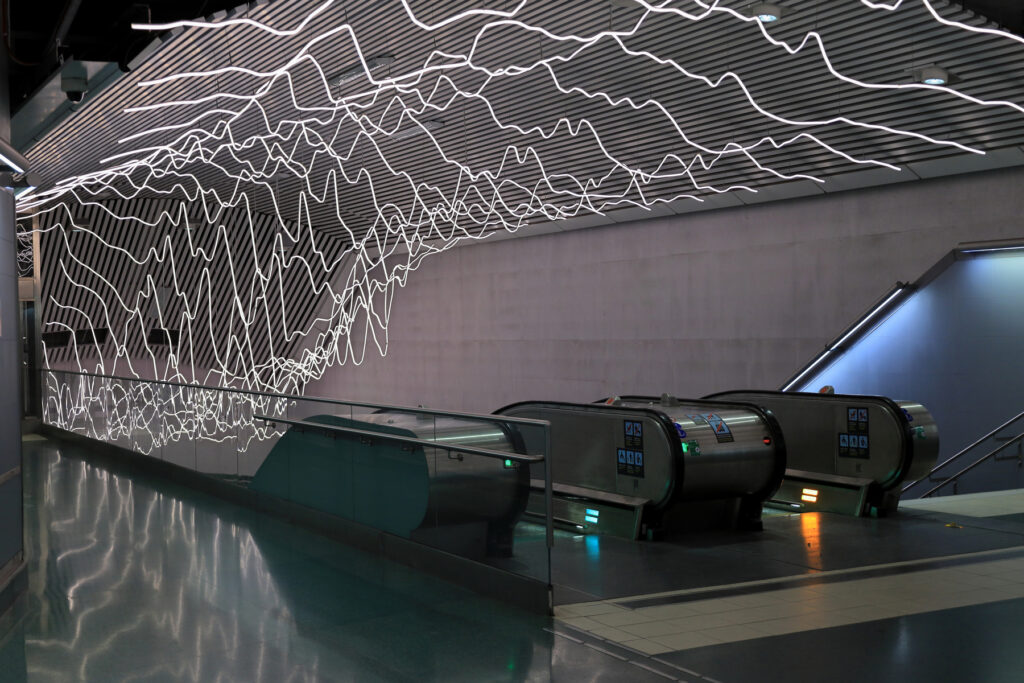
On my first pass through Odenpan I couldn’t find David Svensson’s Life Line installation – a series of fluorescent tubes shaped to resemble his son’s heartbeats. That’s because it’s not actually part of the metro, but the deeper lines used by the larger commuter trains. Still, you can roam freely between the two, so I’ve included it here after tracking it down on a later visit!
The green line doesn’t have a cave station here, but instead takes the gallery theme more literally. It’s one of several stops that feature exhibits by recent art and design graduates, rotating every three months.
Hötorget
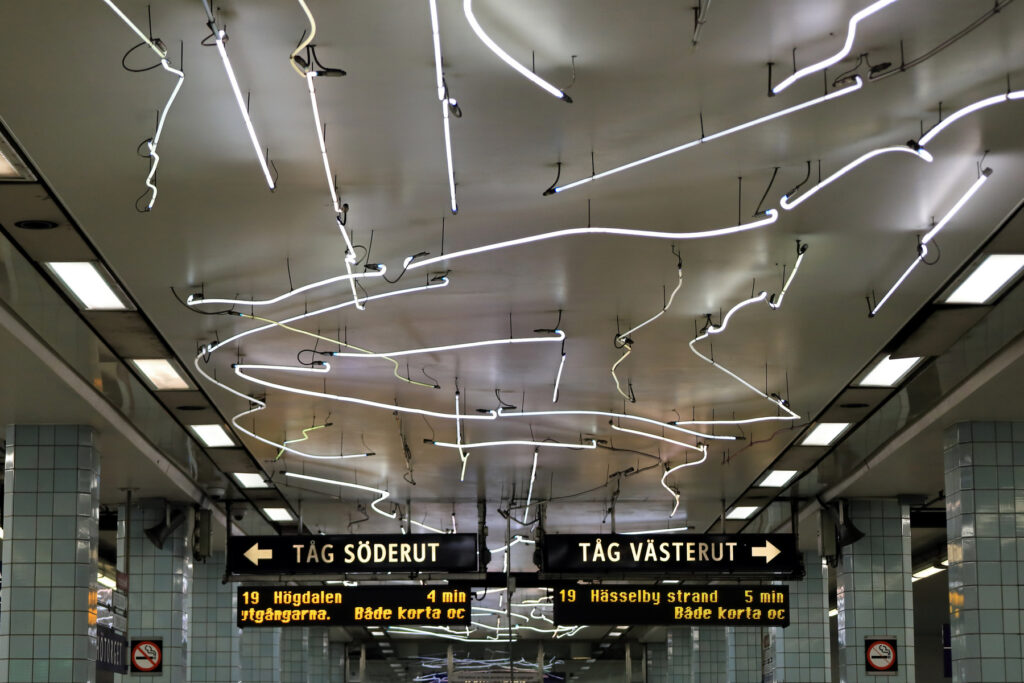
One of the earliest stations, dating from 1952, Hötorget’s orginal styling has been preserved: most notably the decorative square tiles, but also features like signage and seating. The overhead neon, however, is a late 90s addition – for artistic rather than practical purposes.
Stadion
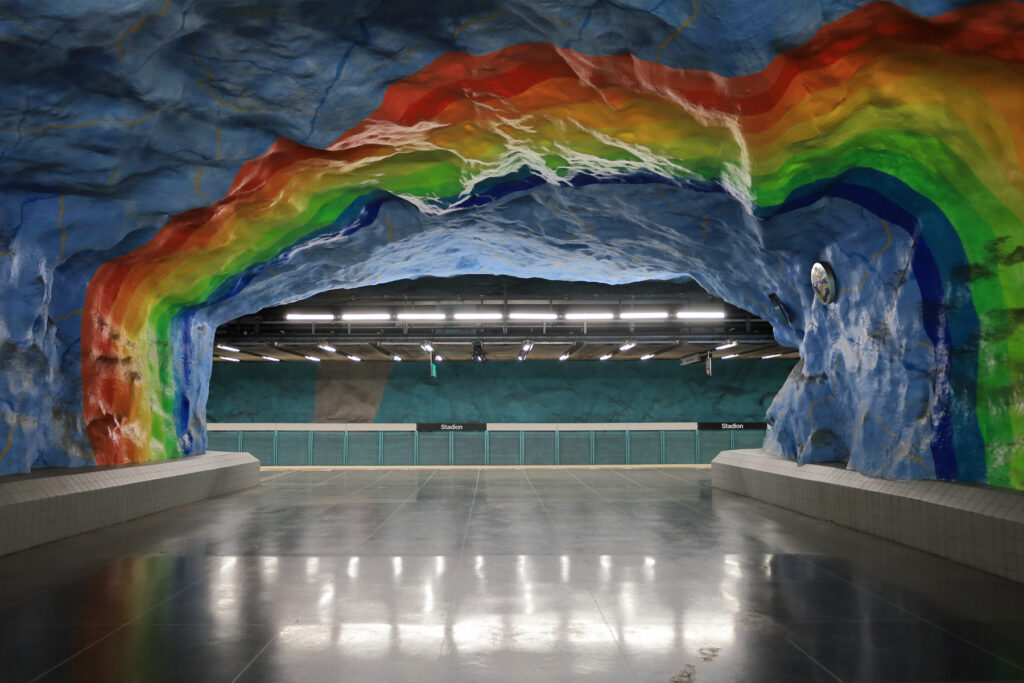
An attractive trio of consecutive stations on the red line are well worth backtracking to T-centralen for; just make sure you’re on line 14 rather than 13 heading north. Stadion was one of the first cave stations, built in 1973: its sky-blue colour scheme – complete with rainbow – was chosen to counteract any negative feelings about this controversial style. Further decorations celebrate sport – the 1912 Olympics were held nearby.
Tekniska Högskolan
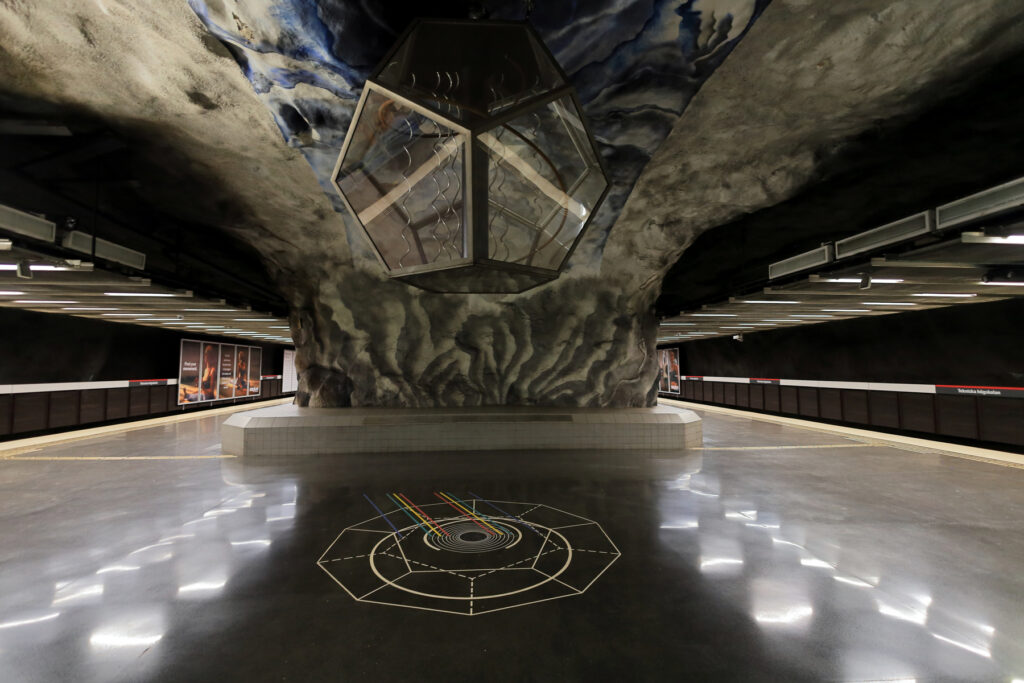
This station honours the Royal Institute of Technology by drawing on key topics from maths and physics. The central suspended dodecahedron is instantly noticeable – and much photographed – but explore further and there are representations of all five platonic solids to be found.
Universitetet
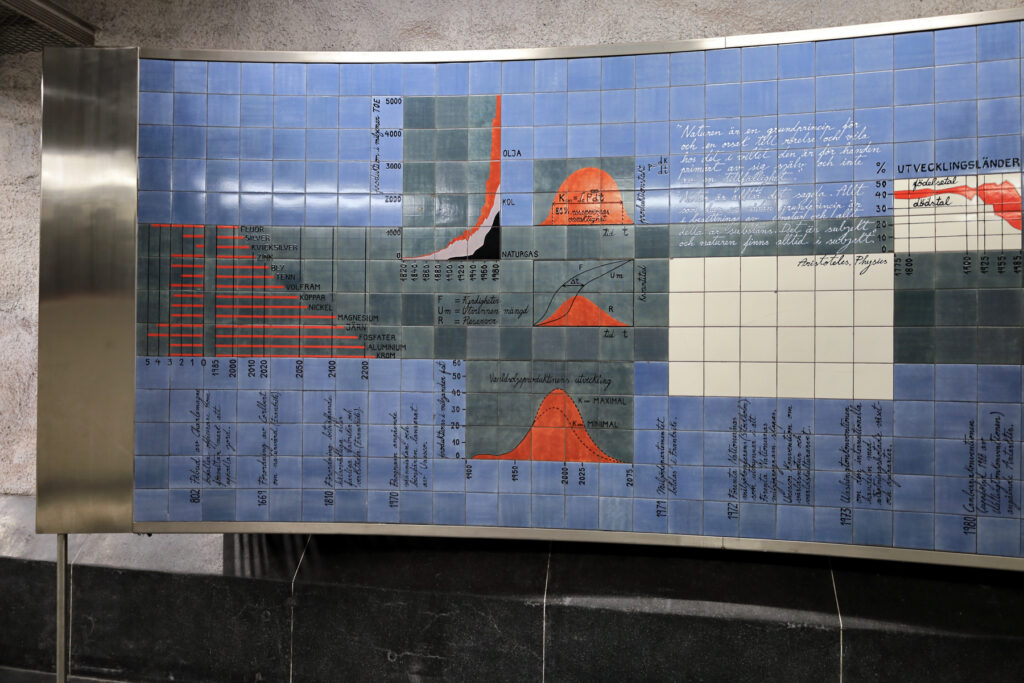
The scientific theme continues at the stop for Stockholm University: the travels and work of Carl Linnaeus are charted on a series of undulating panels made up from hand-painted Portuguese tiles. Instead of advertising, the tunnel walls carry the text of the UN Declaration of Human Rights, again assembled out of tiles. I also found the emergency exits rather striking!
Solna Centrum
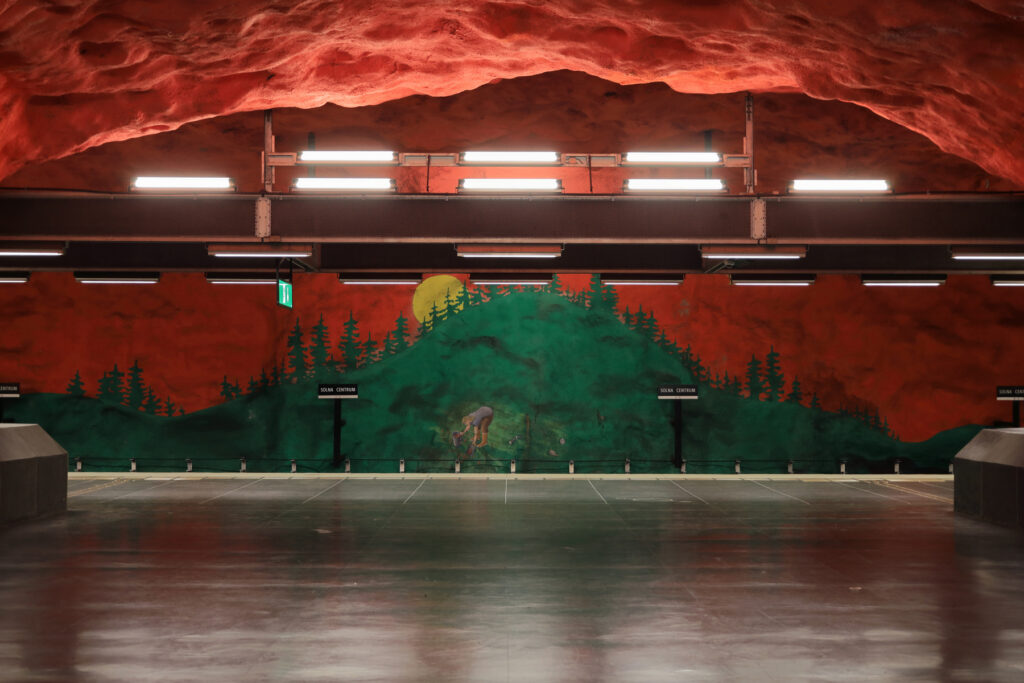
I couldn’t fit this into my original loop, but a dedicated visit was worth it for the shocking red colour scheme. The artwork explores social and environmental themes, particularly deforestation; various scenes of rural life are also depicted.


